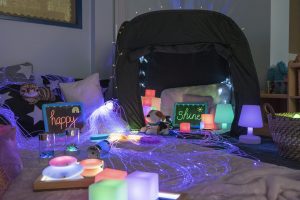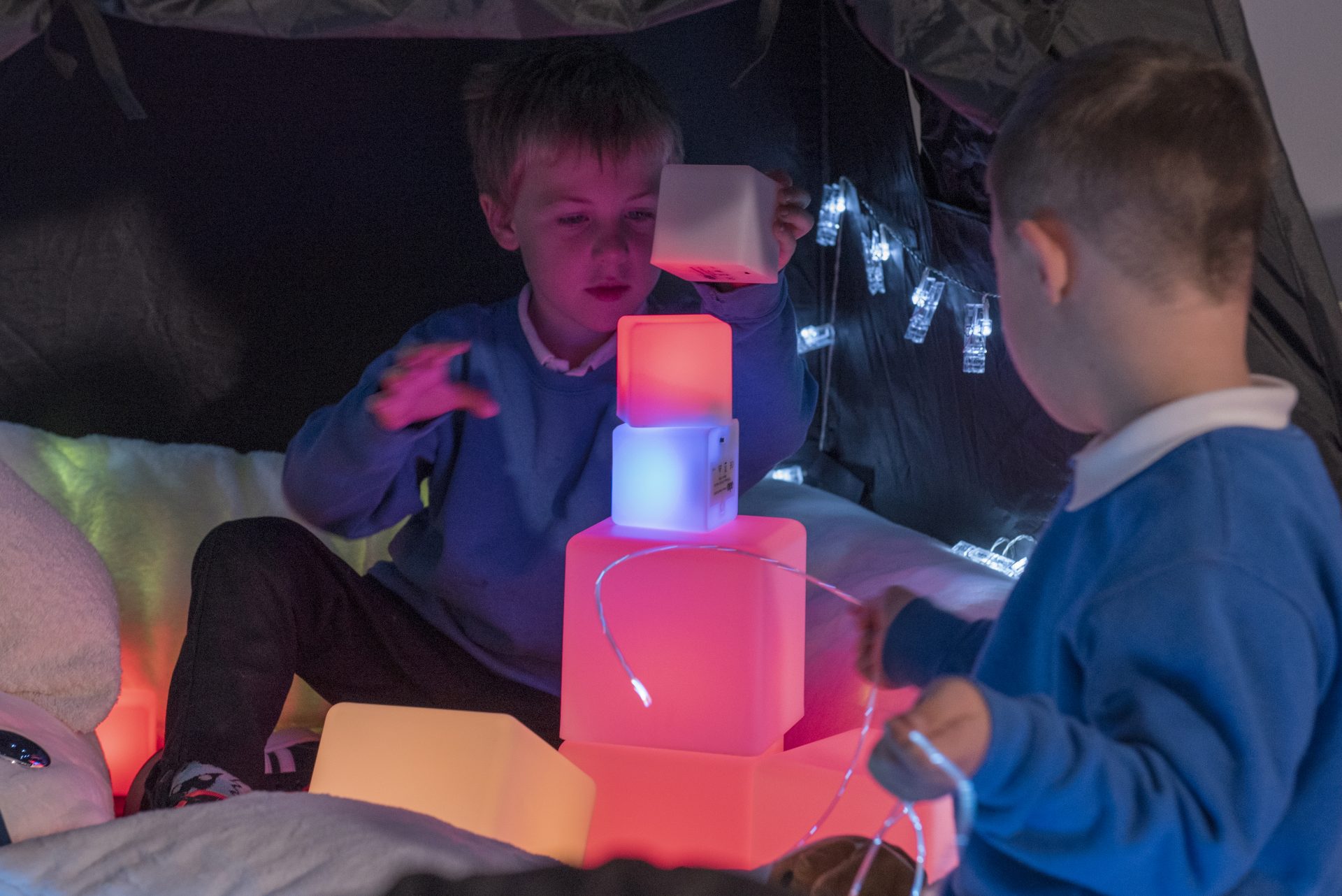As an ADHD adult, I have all too many memories from my childhood of feeling the need to hide away from the sensory experiences that might be thrown at me any given day. I used to take solace in the strangest of places. It could be the cupboard under the stairs, the long unused coal bunker, or my absolute favourite, I would get all my pals (Jacko the Monkey, Action Man, and a few random teddies), climb into bed and pull the nylon sheets over my head, to create a calm and reduced sensory environment. Here I felt safe and the rest of the world couldn’t get to me.
Nowadays, I work with ADHD children, their teachers, and their families, and I find myself recommending similar strategies to the ones I employed as a child. You see, often one of the most prominent features of ADHD is hyperactivity, and one of the major difficulties with hyperactivity is that it is a 24-hour situation. It is unerring and relentless. So, this means that we need to find strategies for children to access, not only during the daytime, but during the night-time as well.
So, let’s start with what happens during the daytime.
During the day, most children find themselves at school and when they are at school, however happy they are, they are in an alien environment. It is not their home, it’s full of other people, and is potentially quite loud and hyper stimulating. As a result, some of our more vulnerable ADHD children need time out during lessons. This often involves going to sit in a corridor to calm down or going to another classroom, or spending time with a trusted adult, which is a break for them, of sorts. But in some cases, something quite special needs to be put in place. A sensory space where effective movement breaks can happen.

So, what does a good sensory space look like?
Well, we’ve come a long way since disused coal bunkers, and there are lots of fantastic resources available on the market. But before we start, we need to find a place to create the space. This preferably needs to be a quiet area in the school (or home if that is the case), and you can then put in a pop-up sensory space or pod, something like these below.
Explore our full range of resources for Sensory Spaces
The smaller sensory pods are great for one child, maybe one who prefers to relax on their own, whereas the larger sensory space can accommodate two or more children. A very useful resource if you have an ADHD child with a peer mentor, or one who simply just needs company during their time out or movement break.
However, just having a space is not enough for an ADHD child to reduce their anxiety and hyperactivity, and therefore experience a state of calm. You see, hyperactivity in ADHD is all about doing, and so we would need to put some tactile, and sensory resources in place to fully meet their physical and neurological needs.
Suitable resources could include something really simple like a colour changing sensory cube. Obviously, these can just be running in the background, or can be used as an interactive resource. I once saw a child cutting up paper fish and sticking them to the cube to create an aquarium. It completely transfixed him.

Sensory balls to create a ball pit can also be fun. In a non-challenging and safe environment, your ADHD child can dive into the balls, throw them around, and burn off some of that hyperactive energy in a controlled way.
And how about a giant bean bag too. These great resources are fabulous for letting off steam, you can roll on them, fall onto them, lie face down or face up. And again, crucially, make the most of that all important movement break.
But what about bedtime?
ADHD is a 24-hour condition, and hyperactivity doesn’t go to sleep at bedtime, and quite often, neither does the child. But ADHD children (and adults), still get tired like everybody else. One of the pieces of advice I give is to make the bed into a sensory space. If you can’t sleep … rest your body. But for an ADHD child to lie there and relax, they are going to need something to focus upon. This could include a vibrating tactile cushion, peg lights, or a glow in the dark comfort blanket. All things that you can float off while looking at.
The key … be creative. You will be astounded at some of the things you can achieve for an ADHD child with a sensory space.
The limits are limitless!
Explore our full range of resources for Sensory Spaces
With many thanks to Andrew Whitehouse for writing this blog.
TEDx Speaker and Bamford Lecturer Andrew Whitehouse is a specialist in neurological diversity and provides interventions for professionals, parents and young people with Autism, ADHD, PDA, Dyslexia and related conditions as well as behavioural interventions. Andrew has a number of roles including training, strategies and therapies for education professionals in early years settings, schools, colleges and universities, observing learners in the learning environment and providing practical solutions to help them achieve their potential. Andrew has an extensive conference profile and has just published his acclaimed first book which is available on Amazon.









